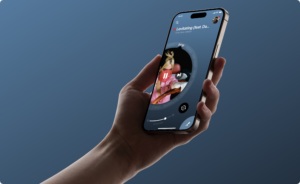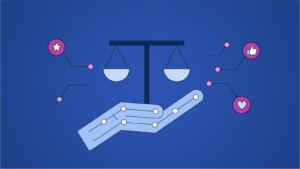If you work in digital product design, especially in fast-moving sectors like fintech or healthcare, you’ve probably seen a shift in how creative work gets done. It’s subtle, not a mass replacement of designers or strategists, but a shift in rhythm. The creative process is no longer linear or siloed; it’s collaborative, iterative and increasingly includes a new player: generative AI.
A few years ago, the idea of using AI in creative marketing was met with skepticism. Agencies worried it would commodify the craft. Clients feared it would feel robotic or inauthentic. But that fear has largely evolved into experimentation and, in many cases, acceleration.
AI isn’t the star—it’s the stagehand.
At our agency, we’ve stopped seeing AI as a rival and started treating it more like an intern with a photographic memory and a flair for surprise. It’s helping us move past blank canvas syndrome and letting us stress-test wild ideas earlier in the design process.
When we’re prototyping fintech dashboards or behavior-based healthcare apps, AI tools now assist with everything from microcopy variations to personalized UX flows based on real-time behavior modeling. But what’s more exciting is how we’re seeing AI augment the way marketing campaigns come to life around these apps.
Take what Coca-Cola did with its “Create Real Magic” campaign. Rather than push a finished ad down the funnel, they invited users to co-create AI-generated art using Coca-Cola’s brand assets and OpenAI’s tech. It wasn’t just playful. It reframed their brand as accessible, participatory and culturally relevant. That’s smart use of AI, not just for efficiency, but for resonance.
Or look at what Canva is building with Magic Design and AI-powered editing features. It’s democratizing design in ways that don’t undercut professional creatives but extend their reach. We’ve had clients use Canva’s AI to create internal concept boards or early campaign drafts, which we then refine into polished assets. It cuts through early friction and lets agencies focus on strategy and storytelling, not just production volume.
Clients are winning quietly.
There’s a common fear that using AI in marketing might feel disingenuous, especially in regulated spaces like finance and healthcare. But when used transparently and ethically, AI can help brands get closer to the people they serve.
We’re now using AI-driven personas and behavioral modeling in early UX phases to simulate how different user types might engage with an app before a single line of code is written. For fintech startups targeting first-time investors, we can map out anxiety triggers or confidence milestones based on historical behavior data, then shape messaging to match those moments, not replacing empathy, but scaling it.
In healthcare, AI’s role is becoming more about simplifying complexity than replacing care. Some agencies are working with early-stage health tech startups to use AI in triaging patient questions, auto-sorting support requests and even generating early draft content for educational campaigns—always under strict compliance review.
The power isn’t in pretending the AI is the expert; it’s in making the experience smoother, more responsive and ultimately more human by freeing up real clinicians and marketers to focus on higher-touch moments. When the tech is invisible, trust grows.
When it’s done right, you don’t see the AI.
The best AI-driven campaigns aren’t the ones waving the tech flag. They’re the ones where the tech disappears and the experience shines. This is what makes AI such a powerful but dangerous tool—it’s easy to overplay. Nobody wants a chatbot pretending to be a therapist or a finance app pushing “personal” advice generated by a randomizer. That’s where trust erodes.
Agencies that understand the boundaries (privacy, transparency, emotional nuance) can build with AI in ways that feel intuitive, not intrusive. The goal isn’t to trick people into thinking a machine is creative. It’s to use machines to get to creative faster, smarter and more personally relevant.
Here’s where clients benefit most when AI is used responsibly in creative marketing:
• Faster campaign iterations without cutting strategy
• Hyper-personalized content without privacy compromise
• Scalable A/B testing and insights across audience segments
• Prototyping and validation before major ad spend
• More inclusive and representative creative concepts
Nuance is everything. You can’t train a model on your brand tone and expect it to think like your creative team, but you can have it write 20 subject line variations in your brand voice and pick out the top performers to test. You can use image generators to mock up ad visuals for client approval without spending hours in stock libraries. And you can pull consumer sentiment data from AI tools to inform your design decisions, not dictate them.
The designer’s role isn’t shrinking—it’s evolving.
As a UX designer working in some of the most high-stakes industries—fintech, healthcare and early startups—I’ve found AI less threatening and more like an acceleration lane. It lets me spend less time stuck in repetitive workflows and more time designing with intention.
But it also raises the bar: Human ideas have to be sharper now. The value isn’t just in delivering, but in defining what’s worth delivering.
For agencies, the message is clear: Don’t fight the tide. Learn to ride it in a way that still lets your voice, your ethics and your value show through. AI won’t replace the creative spark, but it might just help light it faster.
This article was originally published in the Forbes Communications Council: Designing With The Machine: How AI Is Reshaping Creative Marketing.


